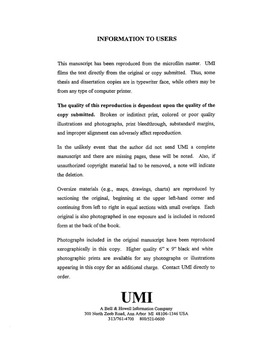| dc.contributor.advisor | Roe, Bruce A., | en_US |
| dc.contributor.author | Hua, Axin. | en_US |
| dc.date.accessioned | 2013-08-16T12:30:31Z | |
| dc.date.available | 2013-08-16T12:30:31Z | |
| dc.date.issued | 1999 | en_US |
| dc.identifier.uri | https://hdl.handle.net/11244/5805 | |
| dc.description.abstract | With successful implementation of the shotgun sequencing strategy, two syntenic regions between human and mouse, totaling about 0.8 Mb, have been sequenced. One is from the DiGeorge syndrome critical region (DGCR) from human chromosome 22q11 and its syntenic region from mouse chromosome 16. The other is from the mouse motor neuron disease critical region (mnd2) from mouse chromosome 6 and its syntenic region in human chromosome 2. Based on results from database similarity search and computational gene prediction, a total of 13 genes have been predicted in the sequenced regions. Genomic structure, putative regulatory elements and possible functional implications of all the genes have been examined in detail. Sequence comparison between these human and mouse syntenic regions revealed a high conservation in gene order, gene structure as well as coding sequences. Regulatory elements including promoters and polyadenylation signals had a moderate to high degree of sequence conservation. A low level and occasionally an absence of sequence conservation was observed in the syntenic intronic and intergenic regions. Varying amounts of repeat sequences, ranging from 22%--60% for human and 26--47% for mouse occurred in the sequenced regions, with similar amounts found in the human and mouse syntenic regions. A new gene prediction method based on human and mouse coding sequence conservation was designed and implemented. A program package, named Geneligner, was developed to facilitate annotation of genomic sequences. | en_US |
| dc.format.extent | xx, 219 leaves : | en_US |
| dc.subject | Gene mapping. | en_US |
| dc.subject | Biology, Molecular. | en_US |
| dc.subject | Chromosomes. | en_US |
| dc.subject | Chemistry, Biochemistry. | en_US |
| dc.subject | Biology, Genetics. | en_US |
| dc.title | Comparative sequencing of human and mouse syntenic regions from DGCR and MND2. | en_US |
| dc.type | Thesis | en_US |
| dc.thesis.degree | Ph.D. | en_US |
| dc.thesis.degreeDiscipline | Department of Chemistry and Biochemistry | en_US |
| dc.note | Adviser: Bruce A. Roe. | en_US |
| dc.note | Source: Dissertation Abstracts International, Volume: 60-05, Section: B, page: 2112. | en_US |
| ou.identifier | (UMI)AAI9929558 | en_US |
| ou.group | College of Arts and Sciences::Department of Chemistry and Biochemistry | |
